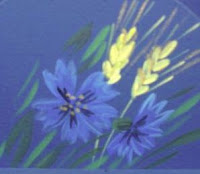Back in April 2005, 130 roleplayers, interested in historical re-enactments, gathered at Kassinurme Hills, Jõgeva County, where an ancient fort was being reconstructed. The event's popularity has increased over the years. In 2009, there were 425 roleplayers involved. LINK
MORE PHOTOS AND INFORMATION:
Tallinna Postimees has a wonderful galllery of photos.
www.histrodamus.ee has a great website with a timeline, map and facts. Here is an excerpt in Estonian:
1343. aasta aprillis algas Jüriöö ülestõus Harjumaal. Selle põhjuseks oli ilmselt kohaliku aadli omavoli eestlaste kallal ja ka see, et maa hakkas peremeest vahetama. Lühikese aja jooksul tapsid eestlased kõik sakslased, kelle nad kätte said ja vallutasid Padise kloostri, mis põletati maha ning 28 munka tapeti. Nii oli lühikese ajaga kogu Harju (va. Tallinn) võõrvõimust vabastatud. Järgmisena asus eestlaste väidetavalt 10 000-meheline vägi Tallinna lähistele laagrisse, abi paluti ka Turu foogtilt (Rootsi kuninga Soome asehaldurilt). Rootsi vägi lubaski eestlastele appi tulla.
 |
| Photo of Padise Abbey by Zosma |
The massacre started at Padise Abbey and spread across Harjumaa. Although it lasted 3 years, it was ultimately unsuccessful and the Teutonic Knights had a much stronger position than ever.
From an interesting source: (Imperial Teutonic Order)
After the Estonians of Harria rebelled in the St.George's Night Uprising of 1343 the Teutonic order occupied the territories. The overthrow of the Danish government came 2 days after the Order had defeated the Estonian revolt and the Danish viceroy was imprisoned in cooperation with the pro-German vassals. The castles in Reval and Wesenberg were handed over to the Order by the pro-German party on May 16, 1343 and the castle at Narva in 1345. In 1346 Estonia (Harria and Vironia) was sold for 19,000 Köln marks to the Teutonic Order, the shift of sovereignty from Denmark to the Teutonic Order took place on November 1, 1346.The same source goes on to state that these were illegally taken by force and as of 2010, the Duchy of Estonia is still the possession of the Teutonic Order! TRUTH or FICTION?
The present 60th Hoch und Deutschmeister of the Teutonic Order has formally decreed that on the 1st of January 2010, the Teutonic Order of Saint Mary's Hospital in Jerusalem, reclaimed all the Teutonic Orders formerly held possessions, rights and patrimony to the Teutonic Duchy of Estonia, which was sold by the King of Denmark to the Teutonic Order on the 1st of November in the year 1346 and was never legally re-sold or given away by the Teutonic Order to any other Country, State or Person, but infact was illegally taken by force without due consent or compensation given to the Teutonic Order of Knights, therefore the present 60th Hoch und Deutschmeister of the Teutonic Order, formally assumes from the date of the aforementioned decree issued, the complete Feudal Overlordship of the Duchy of Estonia together with Title and Rank of Duke of Estonia, to be henceforth held, born and enjoyed as such upon all present and future Hoch und Deutschmeisters of the Teutonic Order in perpetuity as the sole possession of the Teutonic Order and Brotherhood of Knights.The 60th Hoch and Deutschmeister? Is this a joke? Does the Teutonic Order still exist? Wait and find out!

























